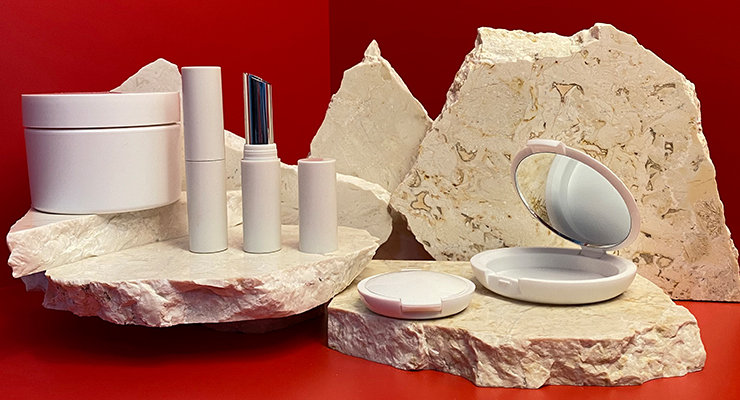Jamie Matusow: Kemas has been serving the beauty industry for more than 40 years. Please give us a brief history of the company and where it is based.
Darren Eade: We are an Indonesian-based manufacturer. Founded in 1980, Kemas established itself, primarily, as a packaging manufacturer for the beauty industry. During the late '70s and early '80s, aside from Japan, there was little manufacturing in Asia. At that time, our founder was working for Revlon in Asia, where he spent some time building their filling plant in Indonesia for the Asian market.
Looking to go into business for himself, he started PT. Kemas as a beauty packaging manufacturer based in Jakarta as his next step. Since the company's inception, the demand for luxury and high-quality packaging increased over time, and Kemas has continued to grow, currently employing 1,500 - 2,000 employees, spread over seven manufacturing sites. In addition to that early growth into the luxury market, Kemas became the first, non-Japanese company to collaborate with Japanese formula makers and evolved into providing a full-service solution for the Japanese brands. This collaboration still continues today.
JM: Aside from being known as one of the top lipstick producers, what other types of packaging do you specialize in?
DE: We built our reputation as one of the top global lipstick manufacturers. Our lipstick propel/repel mechanisms are regarded as one of the best in the market today. Additionally, we have also specialized in manufacturing compact cases, jars and liners for decades. We are skilled in all types of packaging and decoration, priding ourselves on precision molding and production efficiency. As a result, we cater to all market spectrums, from mass market brands to the most luxurious in the world.
JM: Have you been working on anything new and exciting?
DE: Yes! We have recently formed a partnership with TBM Co., Ltd., to introduce their revolutionary, patented LIMEX material to the beauty industry. TBM is a company based in Japan specializing in developing, manufacturing, and distributing sustainable materials. LIMEX is an innovative new material made mainly from limestone and inorganic materials, offering an extremely low carbon footprint in its life cycle. We were fortunate to secure distribution rights, and we now aim to bring this innovative material to the largest cosmetic brands in the world.
Our objective is to assist these brands in meeting their goals of reducing their carbon footprint. Our ultimate desire is to help build back a thriving natural environment for future generations, and this is one step forward in the right direction. By adding this new material into our packaging portfolio, it is helping us meet these goals and objectives in a more timely manner. In the longer term, we believe LIMEX will be a game-changer in the fight against carbon emissions and GHG. Any beauty brand that is serious about their contribution to SDGs and meeting their corporate objectives should be considering this as a path forward in building a cleaner environment. To complement our ongoing material development, we continue to develop new mono-material and refill concepts, offering complete sustainable solutions.
JM: How do you see LIMEX fitting in with the current sustainability movement and what are the benefits compared to the other available options?
DE: Environmental reform and sustainability in manufacturing have been on our minds for a long time. Over many years, we have been testing, analyzing and producing all of the available resin options, deemed 'sustainable.' We've been testing and developing everything from PCR (Post Consumer Resin), PIR (Post Industrial Recycled Metal), PLA (Poly Lactic Acid) Biodegradable polymer and all variations of mono-material resin-based designs. Through it all, we believe nothing quite compares to LIMEX.
There is a significant reduction in carbon emissions when producing LIMEX. Limestone is LIMEX's main ingredient. Its procurement process is only producing one-fiftieth (1/50) carbon emission compared to petrochemical. Limestone is a natural material that has an abundance of deposits all over the world. It is a sustainable raw material that is non-toxic and chemical-free.
LIMEX has far more advantages than other sustainable options when considering its recycling/up-cycling potential, moldability, aesthetics, functionality and component costs.
What is even more impressive for the beauty and cosmetic sector is having a component that meets all sustainability objectives and maintains a luxurious finish. Aside from the multiple benefits over plastics, LIMEX can replace wood as the main ingredient for making paper. Paper made from LIMEX can be recycled and converted into injected pellets creating a circular economy, which reduces the need to cut down forests and the consumption of large amounts of water, thus preserving our environment for tomorrow. TBM Co., Ltd has been making and supplying LIMEX paper alternatives to the Japanese market for some years.
JM: What are Kemas's plans for 2022 and beyond?
DE: Our plans for 2022 will be to continue developing sustainable solutions for the industry. Coinciding with the development of LIMEX, we will continue to push the boundaries with refillable concepts, adding to our patent pending refillable lipstick design, which has a mono-material refill cartridge to complement the innovative refillable design. In addition, we plan to offer refillable jar and compact solutions molded 100% in LIMEX, ultimately providing the most sustainable, low carbon footprint solutions.














